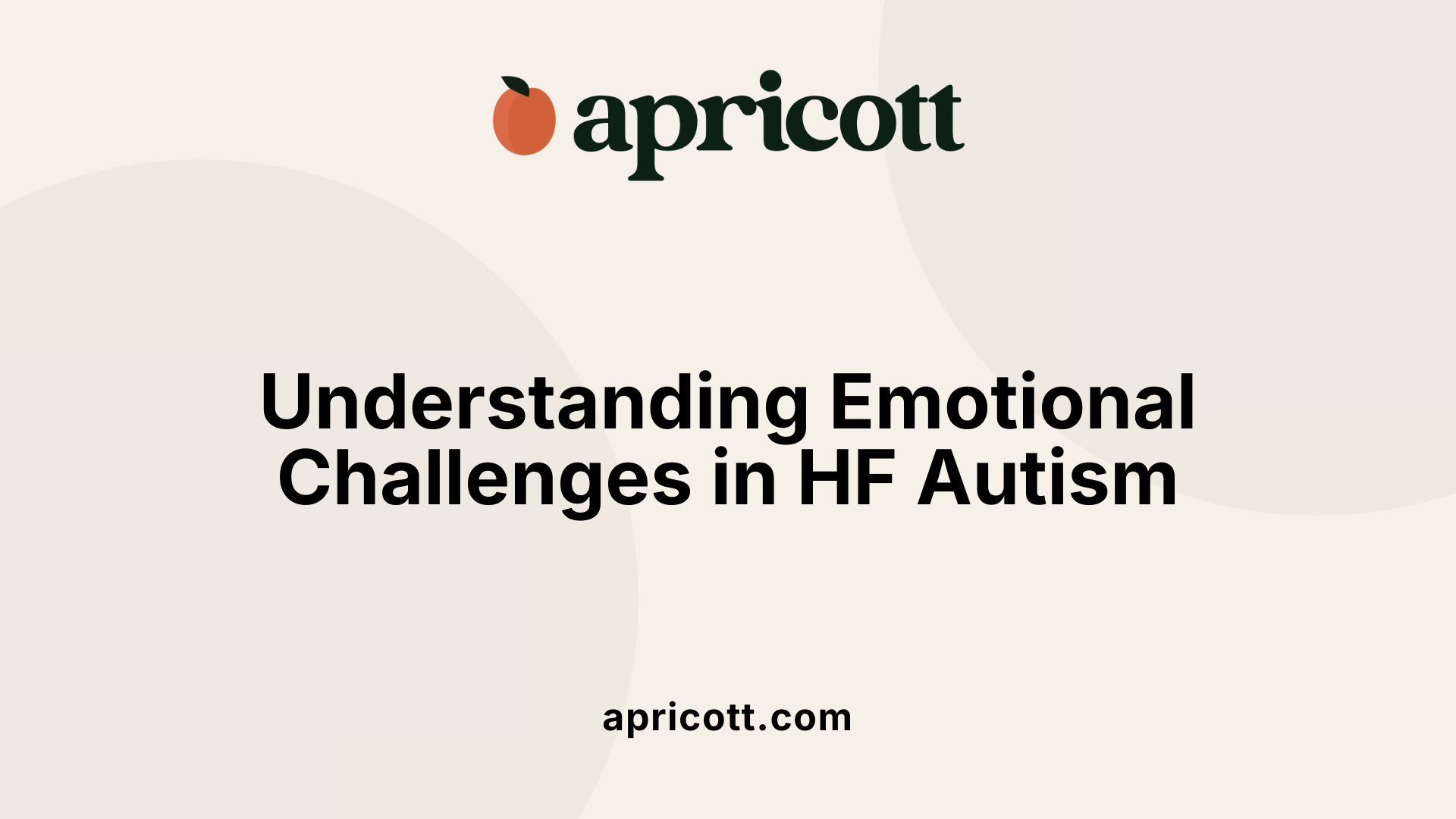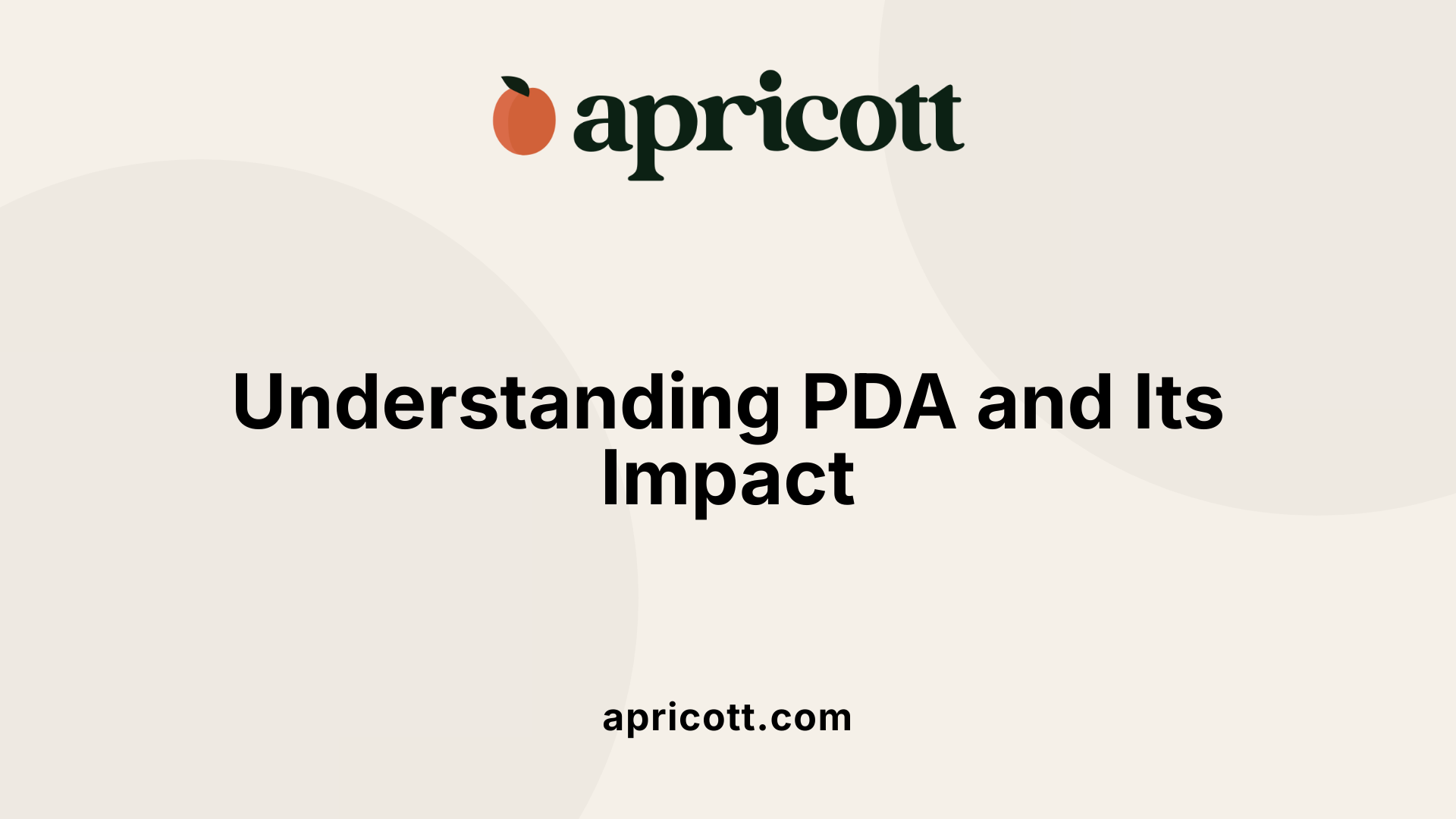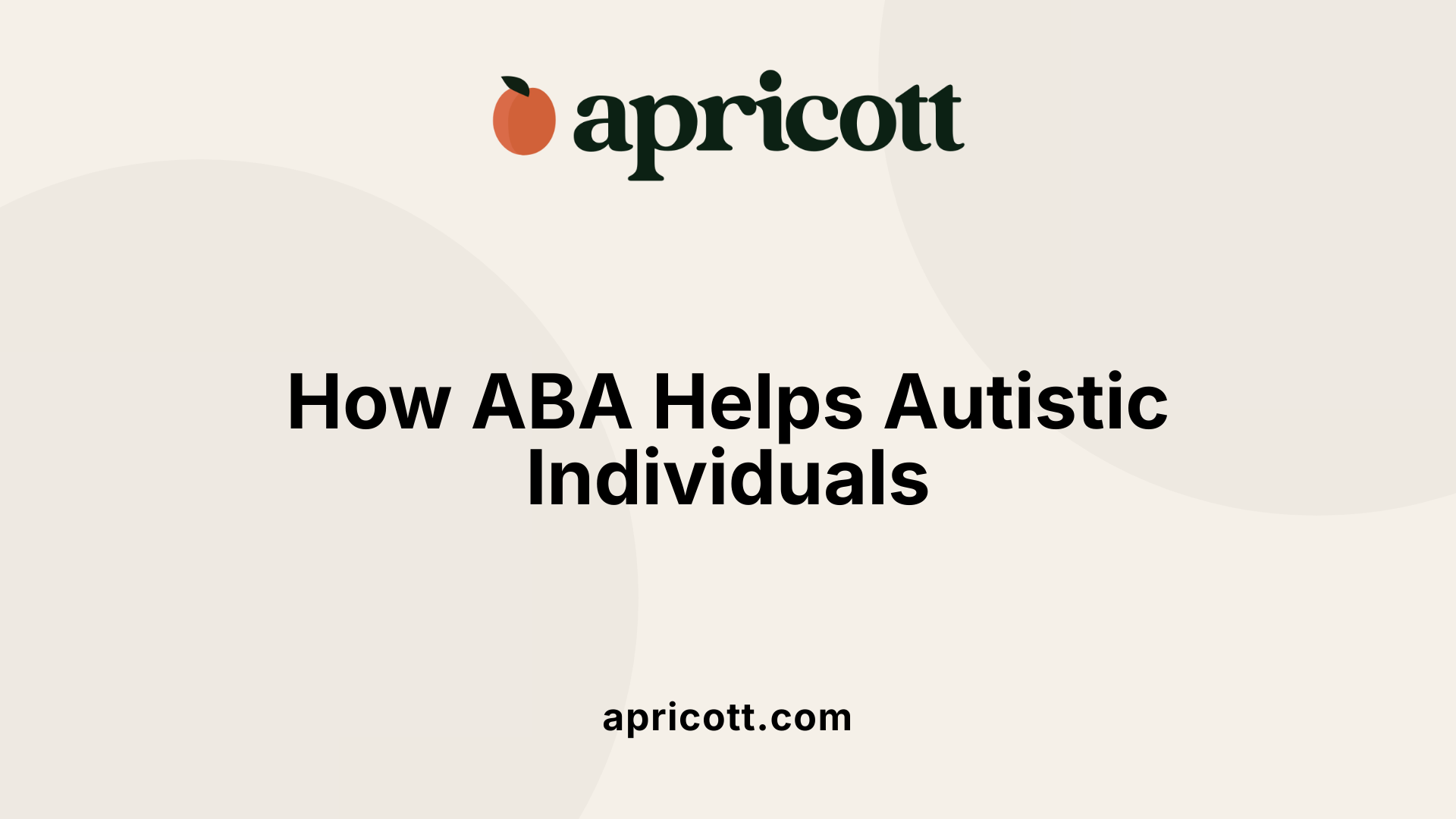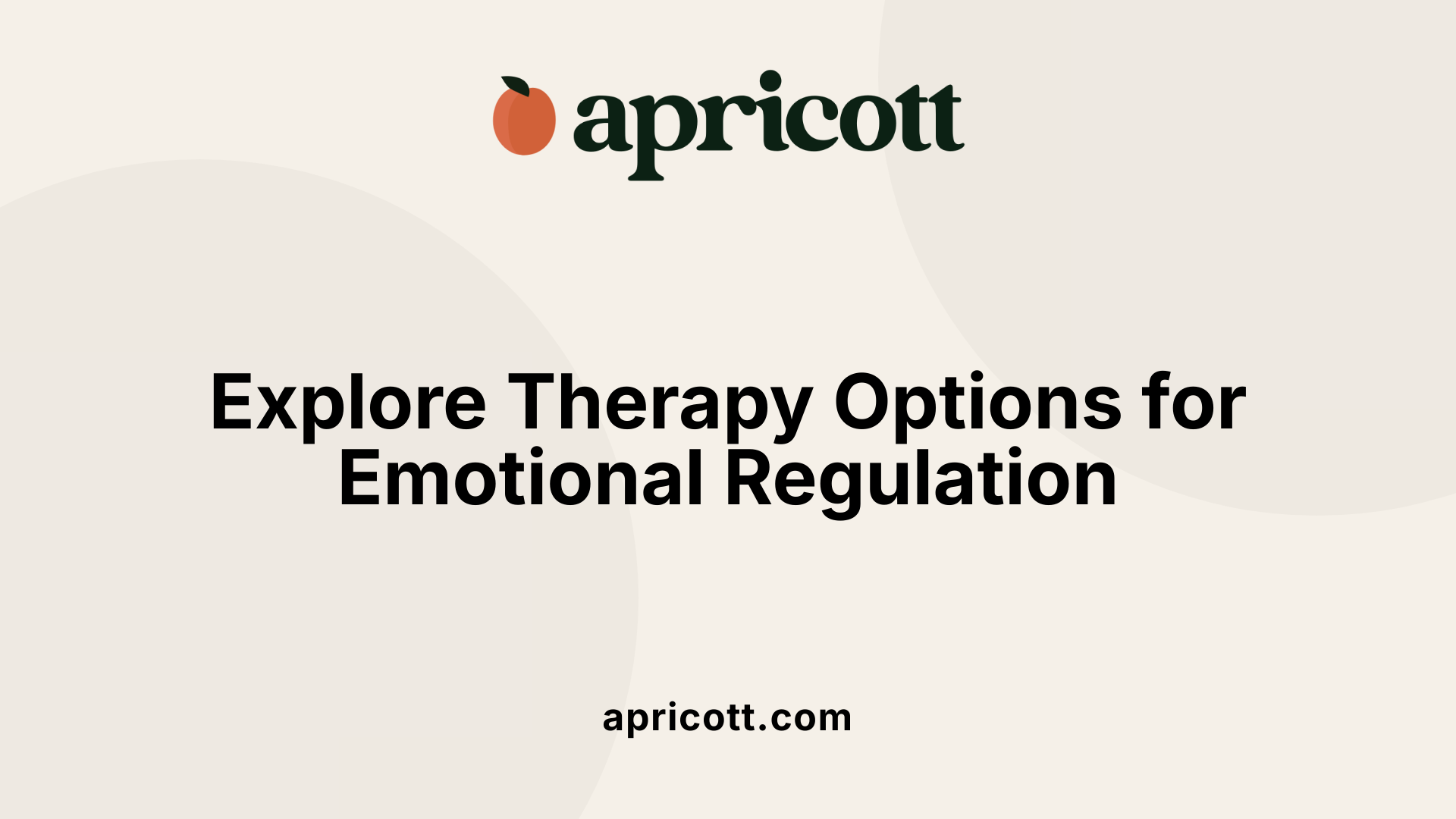December 2, 2025
Understanding and Managing Anger in High Functioning Autism
Anger and emotional dysregulation are common challenges for individuals with high functioning autism spectrum disorder (ASD). These emotional difficulties can significantly impact daily life, social interactions, and overall well-being. This article delves into the nature of anger in high functioning autism, underlying causes, manifestations, and the latest therapeutic interventions designed to help manage these emotions effectively. It also sheds light on specialized therapies, including Applied Behavior Analysis (ABA), and explores how caregivers and professionals play crucial roles in supporting emotional regulation.

Research shows that children and teens with autism are about four times more likely than their neurotypical peers to experience problems with emotion regulation. This heightened likelihood reflects challenges in managing and recognizing their own emotions, which is a frequent and significant issue across the autism spectrum.
Emotion dysregulation in autistic individuals often presents through behaviors such as frequent tantrums, hitting or injuring oneself or others, loud yelling, social withdrawal, and episodes of excessive silliness. These behaviors typically stem from struggles in managing emotional responses and can vary in intensity.
Difficulties with emotional regulation contribute to increased rates of anxiety and depression among autistic people. These co-occurring conditions often persist into adulthood and can severely impact quality of life. This association emphasizes the importance of recognizing and addressing emotional challenges early in development.
Individuals with autism are more likely to struggle with emotion dysregulation, exhibiting difficulties in managing and recognizing emotions. This dysregulation often manifests as tantrums, hitting, self-injury, yelling, social withdrawal, and excessive silliness. These emotional challenges are linked to higher incidences of anxiety and depression that may persist into adulthood, affecting overall quality of life.
| Aspect | Details | Impact |
|---|---|---|
| Prevalence | 4x higher likelihood of emotion regulation issues | Larger portion of autistic youth affected |
| Behavioral Manifestations | Tantrums, hitting, yelling, social withdrawal | Express difficulty managing emotions |
| Emotional Co-occurrences | Anxiety, depression | Worsens overall well-being and adult outcomes |

Individuals with autism often have a lower tolerance for frustration and anger than neurotypical peers. This sensitivity makes them more prone to anger episodes, which can involve behaviors such as shouting, hitting, or withdrawal.
Several factors can provoke anger in autistic individuals. Sensory overload is a significant trigger where heightened sensitivity to sounds, lights, or textures becomes overwhelming. Communication difficulties also contribute, as frustrations arise when individuals struggle to express needs or feelings clearly.
Sensory overload can come from unpredictable or intense sensory input, such as loud noises or bright lights. Combined with trouble communicating, it often leads to emotional outbursts. The inability to convey discomfort or ask for help intensifies feelings of frustration.
Unexpected changes in daily routines or challenging tasks can cause stress and anger. Many autistic people rely on predictable environments and clear expectations; deviations may feel threatening or confusing, triggering aggressive or avoidant responses.
Understanding these causes and triggers is crucial for managing anger effectively in autism. Recognizing the early signs of sensory or communication distress, maintaining structured routines, and providing support can help reduce frustration and emotional outbursts.

Pathological Demand Avoidance (PDA) is considered a profile within the autism spectrum. It was first described in 1983 by Elizabeth Newson and is identified by a strong need for independence and heightened sensitivity to demands. Unlike other autism profiles, individuals with PDA actively resist or avoid demands in various ways due to the anxiety triggered by feeling a loss of control.
PDA is distinguished by six core traits:
Emotionally, PDA can manifest as meltdowns, mood swings, avoidance tactics, and sometimes manipulation. These behaviors stem from anxiety and the overwhelming feeling of being controlled or pressured by demands. Demand avoidance can be triggered not just by direct requests but also by internal or indirect demands, leading to varied resistance behaviors such as refusal, distraction, withdrawal, or aggression.
Effective management of PDA requires building trust and reducing anxiety by avoiding direct language related to demands. Strategies include:

Anger in autistic individuals frequently shows up through both physical and vocal behaviors. Common expressions include hitting, kicking, throwing objects, and shouting. These outbursts can be intense and are often a direct response to overwhelming emotional and sensory experiences.
Communication deficits play a significant role in these manifestations. When individuals with autism struggle to communicate their feelings and needs effectively, frustration can build, triggering aggressive behaviors as an alternative form of expression. Limited verbal skills may mean they cannot easily explain what is troubling them, leading to sudden emotional explosions.
Sensory overload is another major factor contributing to anger and emotional dysregulation. Many autistic people have heightened sensitivities to noise, light, textures, or crowds. When sensory input becomes too intense, it can cause distress and disrupt emotional stability, often culminating in meltdowns or aggressive acts.
Understanding these behavioral signs—physical aggression and shouting—and their ties to communication difficulties and sensory challenges is vital for supporting autistic individuals. Recognizing triggers early and providing appropriate interventions can help reduce the frequency and severity of anger-related outbursts.

Applied Behavior Analysis (ABA) therapy is an evidence-based intervention grounded in the science of behavior. It is widely used to support individuals with autism by encouraging positive behaviors and decreasing those that hinder learning and social interaction. ABA focuses on teaching essential skills such as communication, social interactions, and emotional regulation through systematic reinforcement techniques.
ABA therapy relies on understanding the relationship between behavior and the environment. By analyzing behaviors, therapists can identify triggers and apply interventions that promote desirable actions. The therapy uses principles like positive reinforcement to increase helpful behaviors and reduce challenging ones. Each ABA program is highly individualized to meet the unique needs of the person with autism.
ABA interventions include methods like discrete trial training, which breaks skills into small, teachable steps, and naturalistic teaching, which incorporates learning into everyday activities. These methods ensure skills are meaningful and generalized to real-life situations. Progress is consistently monitored, allowing adjustments to maximize effectiveness.
ABA therapy can be conducted in various environments, including homes, schools, and clinics. Trained professionals such as Board-Certified Behavior Analysts (BCBAs) oversee the design and implementation of ABA programs, while Registered Behavior Technicians (RBTs) often carry out day-to-day therapy. Collaboration with families is essential to reinforce skills and support emotional regulation strategies across settings.
Through these structured yet flexible approaches, ABA therapy plays a significant role in enhancing communication, behavior, and emotional management for individuals on the autism spectrum.

Applied Behavior Analysis (ABA) therapy offers personalized, evidence-based interventions that significantly support individuals with autism spectrum disorder (ASD). By focusing on developing functional and communication skills, ABA helps improve social interactions and daily living capabilities. Techniques such as positive reinforcement encourage the acquisition of desired behaviors while reducing challenging or disruptive behaviors.
Early intensive ABA therapy has been shown to yield notable developmental gains, especially when commenced at a young age. Such early intervention increases the probability of progress in language, cognitive abilities, and social engagement. This advancement facilitates better integration into mainstream educational and community settings.
ABA therapy is highly individualized, catering to each person's unique strengths and challenges. Through functional behavior assessments, therapists design targeted goals focusing on skills like self-care, communication, and socialization. This tailored approach ensures interventions are meaningful and relevant, enhancing motivation and learning outcomes.
Starting ABA therapy intensively during early childhood leads to greater improvements in core autism symptoms. The structured, repeatable nature of intensive ABA sessions fosters skill acquisition, reduces maladaptive behaviors, and builds confidence over time. This foundation helps children navigate more typical developmental milestones.
Effectiveness of ABA therapy varies greatly among individuals due to differences in cognitive abilities, sensory profiles, and personal experiences. Thus, it is critical to adapt therapeutic strategies respectfully and ethically, avoiding a one-size-fits-all mentality. Respecting neurodiversity and prioritizing the individual's comfort and autonomy enhances motivation and long-term success.
| Aspect | Benefit | Details |
|---|---|---|
| Personalized Interventions | Tailored skill development | Focuses on communication, social skills, and daily living |
| Early Intensive ABA | Developmental progress | Promotes language and cognitive growth in young children |
| Ethical Considerations | Respect for neurodiversity | Supports autonomy and individual variability |

ABA therapy is typically provided by professionals with specific certifications to ensure effective treatment. Board Certified Behavior Analysts (BCBAs) usually hold a Master's degree in behavior analysis or related fields and have completed rigorous training and examination processes. Board Certified Assistant Behavior Analysts (BCaBAs) have less training than BCBAs but still possess a certification enabling them to assist in service delivery. Registered Behavior Technicians (RBTs) are paraprofessionals trained to implement therapy plans under supervision.
BCBAs are responsible for conducting comprehensive assessments of individuals with autism, designing customized treatment plans based on these assessments, and monitoring progress. They also provide training and supervision to other team members. BCaBAs support BCBAs with aspects of assessment and directly assist in therapy implementation.
RBTs deliver therapy sessions directly, applying behavioral techniques to teach new skills, manage behaviors, and collect data on the individual's progress. Their role is crucial in the day-to-day interaction that facilitates learning and behavior change.
Supervision is a critical component of ABA therapy. BCBAs oversee the work of BCaBAs and RBTs to ensure fidelity to the treatment protocol and make adjustments as needed based on data collected. They continuously analyze progress and collaborate with families and other professionals to tailor the therapy to the individual's evolving needs. This ensures that therapy remains evidence-based, personalized, and effective across different settings such as home, school, and clinics.

Therapies such as Cognitive Behavioral Therapy (CBT) and mindfulness-based approaches are effective in helping individuals with autism improve their emotional regulation. CBT focuses on teaching skills like deep breathing, visualization, and recognizing emotional cues to manage anger and emotional outbursts. This method helps autistic individuals understand the triggers for their emotional responses and equips them with practical coping techniques.
Mindfulness and relaxation techniques play a pivotal role as well. They encourage present-moment awareness and calmness, which can reduce emotional escalation and prevent meltdowns. Regular practice of mindfulness can improve attention to internal emotional states, enabling better self-regulation.
Another valuable intervention includes the use of social stories and visual aids. These tools help individuals on the autism spectrum identify, understand, and express their emotions. Visual supports clarify abstract emotional concepts, making it easier for children and adults to recognize feelings like anger or anxiety and respond appropriately.
Early integration of these therapies supports breaking the cycle of emotional dysregulation by fostering emotional awareness and acceptance. Parent involvement and consistent reinforcement of these strategies at home further enhance their effectiveness, resulting in improved emotional and behavioral outcomes for individuals with autism.

The Stress and Anger Management Program (STAMP) is a structured nine-week group intervention tailored for school-aged children with high-functioning autism spectrum disorder (ASD). Using cognitive behavioral therapy (CBT) principles, STAMP focuses on helping children recognize their emotions and develop practical coping strategies to manage anger and anxiety. The program integrates activities that teach emotional awareness, relaxation techniques, and problem-solving skills within a supportive group setting.
A crucial component of STAMP is the inclusion of parent training and support sessions. These sessions equip caregivers with tools and strategies to reinforce emotional regulation techniques at home. Parents learn how to recognize early signs of emotional escalation in their children, promote the use of calming strategies, and foster a structured environment that supports emotional growth. This involvement strengthens the child’s ability to generalize skills learned in therapy, enhancing overall effectiveness.
Research shows that structured programs like STAMP lead to significant improvements in anger management and reductions in anxiety for children with ASD. By focusing on teaching identification of emotions and coping methods, children gain better control over their behavioral responses. Consistent practice and parental reinforcement help solidify these skills, resulting in improved social functioning and quality of life. Behavioral therapies such as STAMP also contribute to increased parental confidence in handling emotional challenges, forming a positive feedback loop that supports sustained progress.

Recognizing physical signs of emotional escalation is a crucial first step in managing emotion dysregulation for individuals with autism. These signs might include increased heart rate, restlessness, or changes in facial expression and body language. When caregivers and individuals themselves learn to spot these early indicators, they can intervene before emotions spiral out of control.
Coping strategies are essential tools in preventing meltdowns and emotional crises. Techniques such as retreating to a quiet space allow individuals to remove themselves from overstimulating environments, which can trigger or worsen emotional distress. Self-statements — verbal reminders or calming phrases — help maintain focus and reduce anxiety during stressful moments.
A preventative approach that combines early recognition with coping strategies significantly reduces the frequency and severity of emotional outbursts. Teaching these skills early empowers individuals with autism to manage their emotions proactively. Caregivers also benefit by knowing how to support and reinforce these techniques consistently.
Overall, early implementation of these methods creates a foundation for better emotional regulation, improving quality of life and decreasing the risk of meltdowns and crises throughout childhood and into adulthood.

Parents play a crucial role in helping children with autism manage their emotional challenges. They serve as models by demonstrating healthy emotional responses that children can observe and imitate. When parents respond calmly and constructively to stressful situations, they provide a clear example of how to regulate emotions effectively.
In addition to modeling, parents reinforce coping strategies that children learn during therapies such as cognitive behavioral therapy (CBT) and mindfulness practices. For example, parents might encourage their child to use a quiet space or self-talk techniques when feeling overwhelmed, strengthening these habits through consistent reinforcement.
Parental involvement in therapy programs significantly enhances their child’s ability to manage emotions. Research shows that when parents actively participate in interventions, their confidence in handling their child’s emotional difficulties grows. This confidence, in turn, helps maintain a positive cycle where parents feel empowered to support their child consistently, which improves the child’s emotional regulation over time.
Overall, parents are not only caregivers but vital partners in therapy who influence emotional development through modeling, reinforcement, and active engagement, which contributes to better management of anger and anxiety in children with autism.

Individuals with autism spectrum disorder (ASD) often experience co-occurring mental health conditions that can significantly influence the intensity and frequency of anger episodes. Disorders such as Attention-Deficit/Hyperactivity Disorder (ADHD), Intermittent Explosive Disorder (IED), Disruptive Mood Dysregulation Disorder (DMDD), anxiety disorders, Post-Traumatic Stress Disorder (PTSD), and Oppositional Defiant Disorder (ODD) commonly appear alongside autism.
These overlapping conditions can exacerbate difficulties in emotional regulation, making anger episodes more severe and frequent. For example, ADHD may contribute to impulsivity and difficulty calming down, while anxiety and PTSD can increase emotional sensitivity, triggering more intense or prolonged outbursts. Similarly, ODD and DMDD bring challenges in managing frustration and mood swings, further complicating anger management in autistic individuals.
Given this complexity, treatment plans for anger in autism must be comprehensive and tailored to address both autism-related symptoms and co-occurring disorders. Effective approaches often involve combining therapies such as cognitive-behavioral therapy (CBT), mindfulness techniques, social skills training, and occupational therapy aimed at sensory processing challenges.
Medication management might be necessary to target underlying mental health conditions contributing to anger dysregulation. Collaboration between healthcare providers, therapists, parents, and educators ensures a holistic strategy that covers emotional regulation skills, sensory management, and coping strategies.
| Co-occurring Disorder | Effect on Anger in Autism | Treatment Implications |
|---|---|---|
| ADHD | Increases impulsivity and difficulty calming down | Behavioral interventions and possible medication |
| Anxiety Disorders | Heightens emotional sensitivity and reactivity | CBT, mindfulness, exposure therapies |
| PTSD | Triggers intense emotional responses | Trauma-informed therapies, safety planning |
| ODD | Leads to mood swings and oppositional behaviors | Behavioral management, parent training |
| DMDD | Causes persistent irritability and outbursts | Mood stabilization, CBT |
Addressing these co-occurring conditions alongside autism allows for more effective anger management and improved emotional well-being for autistic individuals.

Creating supportive environments tailored to the sensory and emotional needs of autistic individuals is essential to reduce anger triggers and promote emotional regulation.
Many autistic individuals benefit from structured, predictable routines. Consistent daily schedules help reduce anxiety caused by unexpected changes, which are often a source of frustration and anger. Predictability allows individuals to anticipate what comes next, giving them a sense of control and safety. Visual schedules and clear communication about upcoming activities can reinforce this structure.
Sensory overload is a common trigger for anger and meltdowns in autism. Environments that minimize harsh or overwhelming sensory stimuli—such as bright lights, loud noises, or crowded spaces—can greatly lower stress levels. Tools like noise-canceling headphones and calm lighting help individuals cope with sensory sensitivities. Tailoring spaces to reduce sensory input supports better emotional regulation and fewer outbursts.
Having designated safe spaces where autistic individuals can retreat when overwhelmed offers an important coping mechanism. These areas should be quiet, calming, and free from demands, allowing time to recover emotional balance.
Furthermore, recognizing nonverbal cues such as changes in facial expressions, body language, or withdrawal can help caregivers and educators intervene early before anger escalates. Establishing trust and observing subtle signals supports timely assistance.
In summary, adapting environments by implementing predictable routines, minimizing sensory overload, and providing safe, understanding spaces fosters emotional well-being. These adjustments help autistic individuals manage anger and improve overall quality of life.

It is important to seek professional support for anger difficulties in individuals with autism when these issues negatively impact daily functioning or pose safety concerns. Early intervention can prevent escalation and improve long-term emotional regulation outcomes.
A range of therapeutic options are available to assist with managing anger and improving emotional skills. Cognitive-behavioral therapy (CBT) is commonly used to teach coping strategies such as deep breathing and visualization. Mindfulness-based therapies help cultivate emotional awareness and acceptance. Social skills training can improve interpersonal communication and reduce frustration.
Occupational therapy addresses sensory processing difficulties that often trigger anger episodes. Medication management may also be recommended when co-occurring conditions like anxiety or ADHD are present.
In addition to in-person services, online mental health platforms such as BetterHelp offer accessible, evidence-based therapy tailored to autistic individuals. These platforms provide flexibility and privacy, making emotional support more readily available.
Mindfulness techniques increase present-moment awareness, helping autistic individuals recognize early signs of emotional escalation and apply calming strategies.
Social skills training supports better understanding and communication of emotions, reducing misunderstandings that can lead to anger. Occupational therapy aids in managing sensory sensitivities, creating individualized sensory toolkits to reduce overload and frustration.
Together, these interventions empower individuals with autism to develop practical tools for emotional regulation, enhancing quality of life and social functioning.
Managing anger and emotional dysregulation in individuals with high functioning autism involves a comprehensive understanding of underlying causes, individualized therapeutic strategies like ABA and CBT, and active involvement of caregivers. By recognizing early signs, adapting environments, and utilizing evidence-based interventions, individuals can develop effective emotion regulation skills. Ongoing research and personalized care continue to enhance quality of life, fostering inclusion, independence, and emotional well-being for those on the autism spectrum.